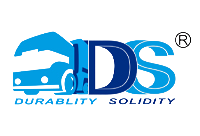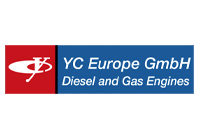Shentou provides on site services
such as factory audit and pre shipment
inspections in China
such as factory audit and pre shipment
inspections in China
shentouservices > Selected Reading > Case Study: Quality Issues in Product Development, Production, Packing & Transportation
Shentou Services
Case Study: Quality Issues in Product Development, Production, Packing & Transportation
A great number of automotive spare parts, in different series, models, quantities and packaging produced by the Chinese auto parts manufacturers on orders by international buyers, are being shipped to their destinations by sea, trains or other transportation methods every day. Other than the potential quality problems in the product development and production process, the overall qualities of the procurements are also impacted by the risks in their packing and transportation because of their different models, quantities, and packaging.
Starting from this issue, we will share with you some typical cases involving qualities in product development, production, packing and transportation that we have observed and some experienced over the years. The international buyers could reduce these quality risks by improving and optimizing the process and capability of communications with the suppliers and thereby minimize the risks and costs of China procurement.
Case One: Quality issues with aftermarket brake drums
Issue 1 – Packing
A professional supplier of commercial vehicle spare parts with over ten-year experience in supplying aftermarket brake drums to European and American customers has experienced various quality issues over the years that involve product packing and transportation, such as damaged packages, rust products, broken pallet feet, tilted pallets, wrong models, product deformation, incorrect labels, pallet marking different than the actual product models, etc. Occasionally, they’ve also had problems where the quantities on the packing list did not match the actual quantities ordered, resulting in extra charges from processing by Customs.
Case Analysis:
The product at issue is brake drum. After the finished products have passed inspections, the drums are spray painted, dried, placed on drums in layers, and then shrink-wrapped with kraft paper and/or plastic films. Due to the different weight, sizes and quantities of each drum model, one of the pre-conditions to reduce damages to drum packing in transit is a reasonable packing and loading plan. Upon examining purchase and sales contracts associated with customer complaints, we have noticed that other than some customers who provided drawings for their purchase, very few specified requirements such as the product performance, appearance, packing and shipping methods in the contracts.
For the issues of packing damage, the following could be considered for packing requirements:
○ The thickness of the wrapping film, the number of wrapping layers and the wrapping forces should be standardized;
○ Consider to add a layer of kraft paper around the pallet as inner packing before shrink-wrapping;
○ Specify the materials, thickness and sizes of the top spacer of pallets;
○ Check the material, thickness and gaps of the wooden strips used to make the pallets;
○ The length, width and height of products placed on pallets could be grouped. Pallets of the same size and height are placed on the same layer to ensure there are no gaps between the pallets so they wouldn’t become tilted, or protective fillers could be added in the gaps.
For the issues of damaged pallet feet, the following requirements could be raised:
○ The pallet feet should be high enough to allow the two forklift arms to be inserted for handling;
○ Make sure the pallet feet are made with whole pieces of wood. If they are made with layered plywood, check how the feet are securely attached to the pallets;
○ Attentions should also be given to the numbers of the feet used and their locations on the pallets.
Issue 2 – New model development
A client learned that his aftermarket brake drum supplier in China did not have the complete range of items he wanted to purchase, so he asked the supplier to develop the missing ones and provided the drawings. Unfortunately, the new items were not developed and produced exactly as the drawings and the QC staff of the supplier also failed to effectively control the quality of the newly developed models according to the procedures of product development. In the end the client received goods which did not completely match the drawings.
Case Analysis:
For aftermarket auto spare parts, customers would typically rely on the OE numbers to identify the models and make the purchase, rarely would they provide drawings as is the standard practice for OE supplies. For the aftermarket factories, most if not all of the products are developed by reverse engineering. Quite often it is hard to confirm if the development samples are indeed the original parts and to ensure the quality of the drawings as well as the completeness of technical specifications and requirements.
After a drawing is received, the factory would usually first check whether they have current products with similar structure and main specifications. If they can identify existing products with similar structure and specifications, they would develop the new items based on the existing products, and some small differences would be easily overlooked or simply let go. Yet when the customers receive the new items, they would check against the original drawings and discover the discrepancies in the specifications, resulting in rejections and quality claims.
In fact, when it comes to new product development by the aftermarket suppliers, we need to undertake evaluations and verifications of their capabilities in product development and production including drawing processing. We should also validate the molding and tooling before the production gets started. Meanwhile, attentions should be paid to the product acceptance standards of each procedure, the parameters of process quality control, the pre-shipment quality control standards as well as inspections before shipment.
Issue 3 – Machining
Quality problems in the machining process of the brake drums include bad inner surface roughness; out-of-spec chamfer resulting in difficult installation, out of tolerance gap with hub, or cracks from forced mounting; run-out because of roundness issues; incorrect center hole position.
Case Analysis:
Very few aftermarket buyers would specify requirements on run-out, cracks, central hole positioning, and chamfering when they make purchase from their aftermarket suppliers. The resulting quality issues are almost always discovered after the buyers ship the products to their customers and then receive the complaints when the customers try to install the drums. Claims will then be raised to the suppliers for compensations.
We suggest that before ordering from new suppliers, detailed discussions and confirmations with the suppliers are necessary on such details as the run-out, cracking, chamfering, dimensional and geometric tolerances. Meanwhile we should make sure that these requirements are also included in the inspection standards and ask the suppliers to undertake pre-shipment inspections.
In addition, we should regularly audit the suppliers’ quality management systems, encouraging the suppliers to make continuous improvement to ensure the effectiveness of preventive measures.
Case two: Quality issues with the packing & transportation of aftermarket brake discs
While the previous discussions addressed the quality issues with regard to aftermarket brake drums, we now turn our attention to the issues with aftermarket brake discs (rotors).
Based on our experiences working with the brake disc factories in China, over 95% of the supplies are typically in customers’ private labels with special designs, and the rest of them are with neutral packages. With the maturity of the brake disc manufacturing in China, the qualities of the products themselves could be quite stable, yet issues with the packing as well as in transportations are not uncommon.
Let us first look at the typical process with the packing and transportation of brake discs:
Readying finished products for packing → Marking → Cleaning →Drying → Anti-rust coating → Placing in plastic bag → Placing in box → Adding accessories if required → Stacking on pallets → Shrink-wrapping → Loading for shipment.
What are then the factors contributing to quality issues in packing and transportation? Our experience and observation over the past decade show that the following issues are the top complaints:
○ The boxes are not strong enough or the discs are not properly packed in the boxes, leading to box damage during handling and transportation;
○ The pallets or the shrink wraps are not strong enough so boxes are damaged from pallet tilting during loading and unloading;
○ The printed colors of the boxes are different even among the same batch of shipment;
○ Marking on the disc’s external surface are incorrect;
○ Disc accessories are missing.
Let us address each of the issues in details.
Issue 1 – The boxes are not strong or disc packing in the box are incorrect resulting in box damage in transit
Case analysis:
When reviewing the more serious quality complaints on damaged boxes for brake discs, we believe the reasons are usually the following:
A. The key to the strength of the boxes for brake discs is their design and the material used, which are usually the primary source of the complaints. Based on the material used, boxes could be made of corrugated paper or single layer cardboard. Regular paper boxes could consist of 3, 5 or 7 layers of paper including inner sheet, corrugated sheet, inner liner, and top sheet. The inner and top sheets could be in paperboard and kraft paper, and the inner liner could be in corrugated paper. For the corrugated paper, universally there are four corrugated types, namely A, C, B, E.
Given the variety of the options, we should consider the design and materials carefully while taking into considerations the size, structure and weight of the disc as well as how the boxes will be stacked on pallets. While most factories choose the center-open box type for cost reduction and ease of packing, there should be clear requirements on the strength (gram) of the inner and top sheets. Typically the top sheet should be between 200g-300g, and the inner sheet should be 100g-150g, whereas the corrugated paper should be 75g-100g.
B. Based on our experience, the three representative structures of brake discs are type H, T and I, among which the T type creates the most problems for the boxes. With this T type structure of one big end and one small end, the box with brake disc inside would easily tilt on pallets and then collapse when pressure on the boxes is applied unevenly. To avoid the risks of collapse, it is advised to add a piece of plywood, with 3-5mm thickness and the same size as the big disc surface, on the side of the small disc end, thereby preventing the box from tilting and collapsing due to the asymmetry structure of the brake disc.
Issue 2 – The pallets or the shrink wraps are not strong enough leading to box damage in loading and unloading
Case analysis:
In our experience and observations, we have noticed many cases where the external boxes or products are damaged because of pallet tilting and collapsing due to issues in brake disc loading and transportation.
The primary reasons:
A. The main reasons of pallet early damages are due to inferior panel materials, panels too thin or the blocks are too small. The panels are usually made of plywood, about 18mm thick. The typical pallet sizes are 800*800, 900*900, 1000*1000, and 1100*1100. The 9 pallet blocks are typically 90*90*180. When choosing pallets for brake disc loading, we should use pallets whose sizes match the area of either four tiling boxes of brake discs or four tiling plus 2 standing upright. If the pallet blocks are reduced to 90*90*90 or the number of blocks becomes 6 in order to reduce the cost of the pallets, it is likely to result in insufficient pallet strength leading to cargo tipping and collapsing.
B. The weight of the brake discs on pallet is unevenly distributed so that the force center of the pallet is deviated and the pallet is prone to tilt when moved by forklifts; The thickness, layer and strength applied in shrink wrapping the pallet do not meet the standards, so that the palletized goods become loose; Pallets of different sizes are used in the same container, so they are not close with each other when placed inside the container, and the gaps between them lead to collapse when vehicles tilt during transportation.
C. When the pallets are being loaded or unloaded from the containers or moved around for consolidation, sometimes the forklift operators do not completely lift the whole pallet, but rather lifting half of the pallet blocks up and leaving half of the pallet blocks bearing the whole weight, and then start pushing the pallet inside or pulling out. These types of operations, having much to do with the skills and lack of responsibility of the forklift operators, are usually the primary reasons for pallet block falling off or cargo tipping and collapse.
Issue 3 – The same batch of color boxes has various degrees of differences in the colors
Case analysis:
These kinds of issues will normally be noticed when customers receive the goods and find the color differences within the same batch.
The primary reasons:
A. The color boxes are printed at different factories or in different batches, resulting in the color differences.
B. The color boxes are stored directly on the ground or in a humid environment, causing color fading and strength degradation due to moisture.
C. There is no color code specification when printing the color boxes or no sealed sample for each batch printing.
Issue 4 – Marking errors on the external surface of the brake disc
Case analysis:
With these issues, the goods customers have received do not meet the requirements of their own marking contents completely or partially. Most of these problems are due to inadequate internal management of the suppliers and the inspection standards do not include marking contents and requirements.
The primary reasons:
A. The marking operation instructions are not prepared, and the first piece/ line inspection processes are not carried out for quality control.
B. The marking work area and the finished-goods-for-marking area are not separated with proper signage.
C. There is no separation, identification and error-preventive measures for finished products with different markings in the cleaning line loading area.
D. There are no inspection standards for markings contents and requirements.
E. The sample inspection quantities used by inspectors cannot meet the requirements.
Issue 5 – Missing brake disc accessories
Case analysis:
After receiving the goods, some customers would find that even though some models are the same as those they currently sell, they cannot sell the new deliveries because of the missing accessories. These kinds of problems generally happen with new customers for these products who are not familiar with the aftermarket product development process and tend to assume that the OE numbers they’ve provided are exactly the same as the ones they are selling.
The aftermarket brake disc development is usually based on reverse engineering with the OE parts. When the OE parts come with accessories, so would the aftermarket parts when they are offered for sale. If the OE parts do not contain accessories, neither would the aftermarket parts. Most of the brake discs sold in the aftermarket do not contain accessories which include some gaskets, bolts, washers and the like for brake disc replacement.
The primary reasons:
A. The aftermarket models with accessories are not identified by either the customers or the suppliers.
B. Although the models with accessories are identifies, the parties have not fully communicated and confirmed the product information.
This article was first published in April, May, June, July, August & September of 2019
keywords:Product Development Project Management Services Post COVID-19 Factory Audits







